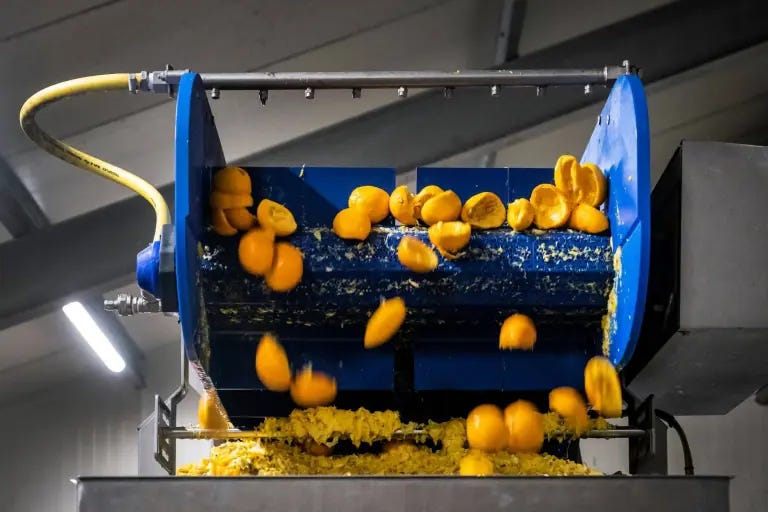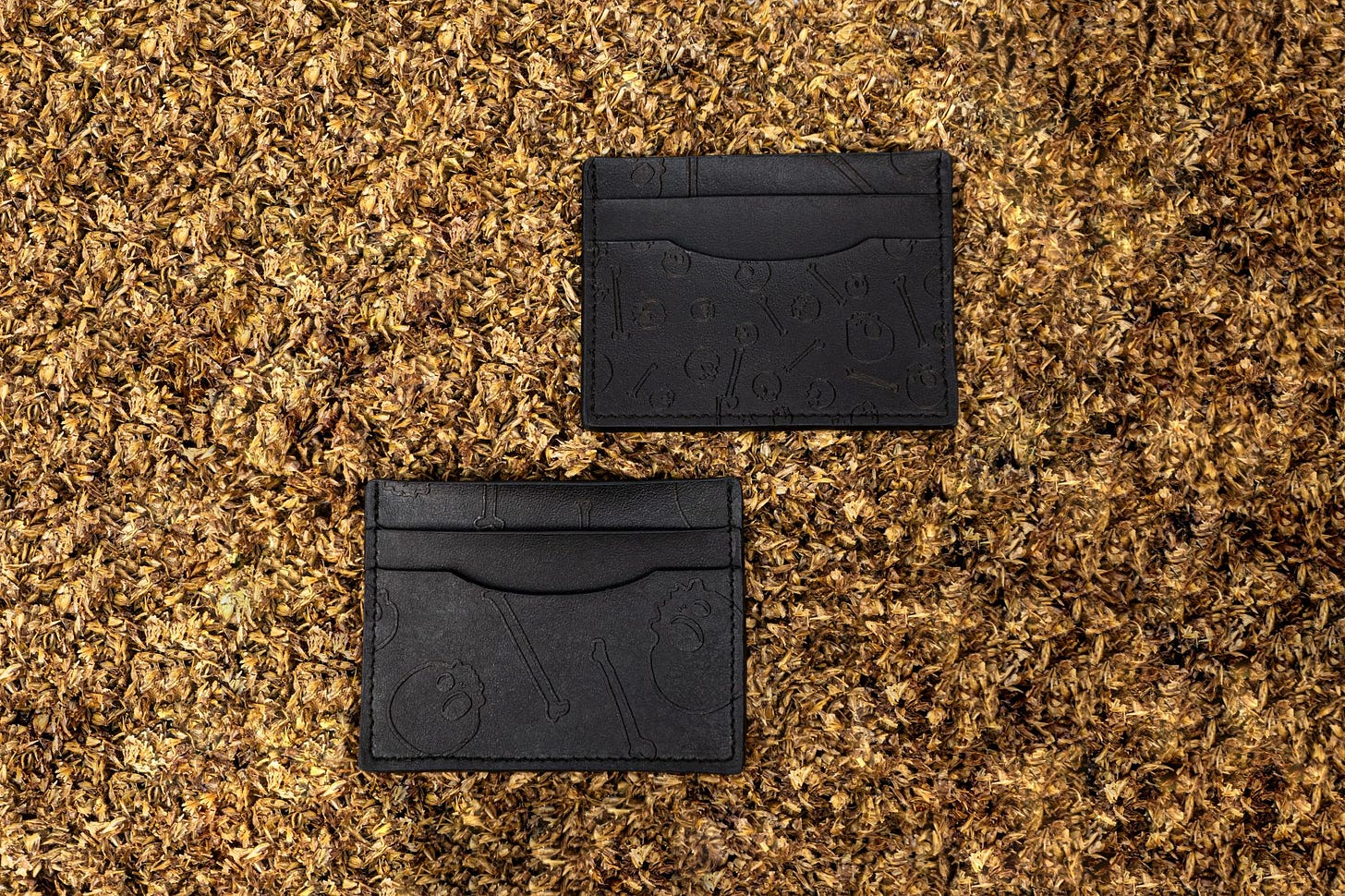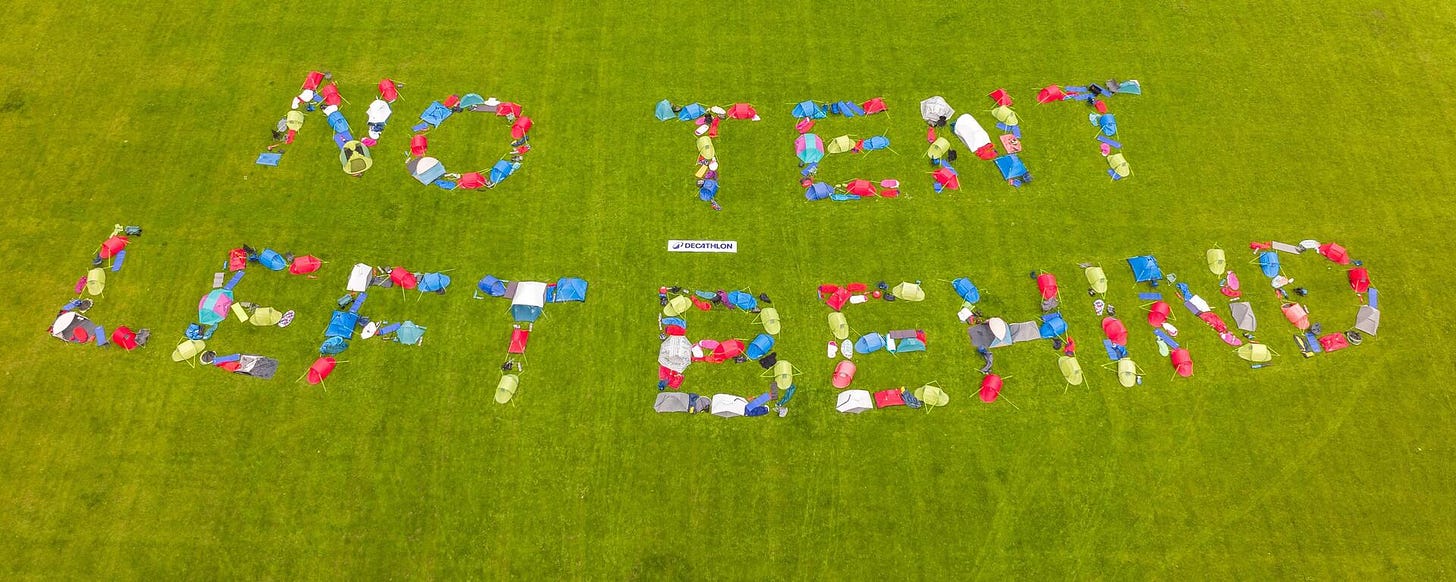♻️ The Truth About Upcycled Ingredients
from waste to wonder, and 11 pieces of good news! Wow!
This week, FTF team member Aurore is debunking some common misunderstandings about upcycled ingredients. Aurore is the Impact Lead at Provenance, so it’s safe to say she knows a thing or two about helping brands have more impact. She’s also clearly keen about leather jackets and hey, who can blame her, especially when they’re made from upcycled ingredients…. or are they? Read on to find out!
We also deliver a mega-edition of our weekly Good(s) News, so you’re up-to-date on all things great across the climate x consumer goods industry.
Let’s dig in…
> In Focus
From Waste to Wonder: The Truth About Upcycled Ingredients
Recycled, upcycled, by-product — we’ve all encountered the terms at some point. If you’re anything like me however, even if you know they don’t quite mean the same thing, you struggle to put your finger on exactly what the differences are.
Deep down I know it wouldn’t be accurate to describe the leather in my leather jacket as “upcycled” but how would I describe it? And what do they mean when they talk about “upcycled pineapple leather”? Is that what my next leather jacket should be made of?
Defining upcycled (it's as tricky as you think)
Upcycled in particular is experiencing a real boom, but for consumer brands the line between genuine innovation and greenwashing has never been thinner. That’s why understand what we truly mean by upcycled matter.
Here are some key principles:
An upcycled ingredient is derived from a material or product that would otherwise have gone to waste.
Through that process, its value increases in such a way that the upcycled ingredient is worth more than the original material.
This distinguishes it from:
By- and co-products in that the creation of the waste product was not intentional. Back to my leather jacket: it's not upcycled because both ingredients were intentionally created as part of the slaughter process. There was “certainty of use” when it came to the leather.
A closed-loop recycling system (like aluminium) which aren't considered upcycling because no value is added compared to the original material.
Upcycled ingredients are the result of the creative transformation of waste products. When someone decided to explore using discarded pineapple fibers to create leather-like fabrics they were onto something. In the last couple of years, its market has been growing rapidly.
That's actually when it becomes tricky: the more established the upcycling process becomes, the less likely it's to still fall into the "upcycled" category.
Orange peels are a good example: orange peels from juice production used to be sent to landfills. In the late ‘90s essential oil extraction appeared as an upcycling innovation and essential oil made from orange peels became a popular upcycled ingredient. From the late 2000s, it had dedicated processing facilities and predictable supply chains integrated into juice production operations, achieving “certainty of use” and becoming a by-product of the juice industry.

When it comes to my leather jacket though, we can still talk about upcycled: to put it simply we’re not growing pineapples for their leaves yet. However as demand formalises and growers can increasingly predict the waste will be taken up its gets closer to gaining by-product status.
Is it such a bad thing? No, ultimately the normalisation of those processes is something we should all work towards. The more established these processes are, the easier it is to collect the waste which can heighten the environmental benefits of upcycled.
The environmental case for upcycled
When done well, upcycling can bring some tangible environmental benefits:
Produce less waste — the waste is transformed into a marketable ingredient. It’s a virtuous circle too, the higher the value of the upcycled ingredient, the less incentive to waste and the increased incentive to create alternative routes.
Carbon reduction gains — when organic matter goes to landfills, it releases potent greenhouse gases. Keeping these ingredients out of landfills means we're recycling the carbon they contain and reducing the greenhouse gases we release into the atmosphere.
Resource conservation — upcycled ingredients reduce the need to harvest and process fresh botanicals that are grown on land that could be put to much-needed food crop production.
Economic benefit redistribution — this can represent additional income for farmers if they reap some of the economic benefits, whether value is created at source or redistributed.
But these benefits aren’t automatic, to ensure you’re not making empty upcycled claims, you'll need to dig a bit deeper into the supply chain.
Avoiding the greenwashing trap!
As a sustainability professional, before incorporating upcycled ingredients, ask suppliers these essential questions.
What was the primary reason for harvesting the raw material? Was it fully diverted from a waste stream, what percentage of it gets diverted today?
Through what processes was it transformed? Was an lifecycle assessment conducted to compare it to alternatives ?
Can you provide a complete supply chain map from source to my ingredient? Are there any audits or certifications in place at any stage?
How do you ensure consistent availability and quality from a waste stream?
You’ll want to publish some of your findings too, as a conscious shopper trying to decide whether I should get a pineapple leather jacket I look for some stats comparing its impact to other leather alternatives.
So how do you explain that choice to your shoppers? Consider answering these questions as you set off to draft your marketing copy:
How established is it in the industry? If the practice is common be clear about it. Don't pretend you've saved it from landfill if that's not true. Use the term "byproduct" instead to avoid making it sound like you diverted waste.
Tell the whole story and make sure you don't over-exaggerate the benefits of using that ingredient.
Provide defensible evidence for sustainability claims: Make sure you can prove the source and supply chain.
Finally, consider the concentration of the upcycled ingredient in your product — make sure you don't overstate the impact of the ingredient.
So about that upcycled pineapple leather jacket?
The upcycled ingredients story is compelling, but like many sustainability narratives, it requires careful navigation between genuine innovation and marketing opportunity.
The key lies not just in using these ingredients, but in understanding their true place in your supply chain story and deciding whether they are right for your brand, so I can decide whether it belongs in my wardrobe.
> Follow up with…
Brand doing it right: Patagonia
Brand doing it right: Rubies in the Rubble
To explore certification: Upcycled Food Association

> Last week in consumer goods x climate…
The Good(s) News
🎯 INKEY | B Corp released its 2024 Impact Report, highlighting key milestones such as achieving fully recyclable packaging with an average of 55% post-consumer recycled (PCR) plastic and launching its first product in 100% PCR packaging. The B Corp-certified company also focused on reducing its carbon footprint by optimizing warehouse storage and transportation.
🎯 Flawsome! Drinks | B Corp™ has partnered with Change Please to stock nine wonky fruit drinks across ten London locations, combining efforts to tackle food waste, support farmers, and fight homelessness.
🎯 LIVSN, the outdoor apparel brand, announced that it is now B Corp certified, achieving a score of 111.3.
🎯 Dr. Bronner's launched its new soap refill carton made with 86% less plastic than their 32oz recycled bottles. The cartons use FSC-certified paper and are fully recyclable through paper milk carton streams. Read our write-up of Dr Bronner’s here.
⭐️ Decathlon relaunched its No Tent Left Behind summer pledge, allowing customers to return any Decathlon-brand tent purchased between June 9th and September 14th, 2025, for a full refund via gift card if returned before September 14th. The returned tents will be refurbished and resold through their Second Life program, supporting circularity and reducing landfill waste from abandoned festival gear.
⭐️ CHANEL launched NEVOLD (short for "Never Old"), a new B2B company focused on developing high-quality materials from recycled textile and leather waste. Created by Chanel and open to all industry players, NEVOLD unites companies such as L'Atelier des Matières, FILATURES DU PARC, and Authentic Material to advance circularity.
⭐️ Salomon released its 2024 Impact Report, highlighting major progress in product circularity, community inclusion, and employee engagement. They launched a locally made carbon-fiber supershoe, introduced the first fully recyclable ski/snowboard helmet, and partnered with CARBIOS to create the world’s first fiber‑to‑fiber biorecycled T‑shirt.
⭐️ Albert Heijn became the first major Dutch retailer to launch hybrid dairy and plant-based milk products, blending 60–70% traditional dairy with plant ingredients to offer a lower-carbon alternative. Developed in partnership with Farm Dairy and PlanetDairy, the new range is now available throughout the Netherlands in skimmed, semi-skimmed, and whole varieties at standard milk prices.
⭐️ MANGO have partnered with Circulose, the recycled pulp production company, to become the first brand to integrate its recycled cotton pulp into production since the company’s restart. This move supports Mango’s goal to use only lower-impact fibres by 2030 and advances its circular fashion strategy.
⚡️The French Senate voted to approve new legislation targeting ultra-fast fashion, including a plan to gradually ban advertising and introduce an environmental surcharge on low-cost garments, in a move to curb the sector’s environmental impact. Fashion companies will be required to to inform customers about the environmental impact of their products.
⚡️ Giki launched their free SME Sustainability Services Ecosystem Map tailored for UK SMEs, mapping 100 organizations that provide key sustainability tools and services such as emissions software, consulting, standards, and offsets.
Have good news? Share it with us - info@followingthefootprints.com!

> Finally, in case you missed it…
🅱️ 5 things you should know about the new B Corp standards
It’s Laura here! I spend more time than most figuring out all things B Corp, and today I’m guiding you through 5 changes you’ll find in the recent Version 7 (or “V7” standards.
Want more? Check out our Website! You can find more about the team behind this newsletter, dig through our content archive AND check out our handy databases there too.
Have ideas for what we should write about next? Reply to this email! We’re always looking for inspiration from folks like you.
Until next time!
Team FTF





